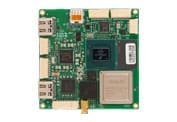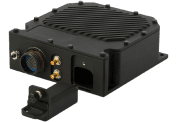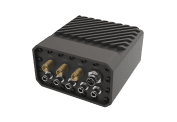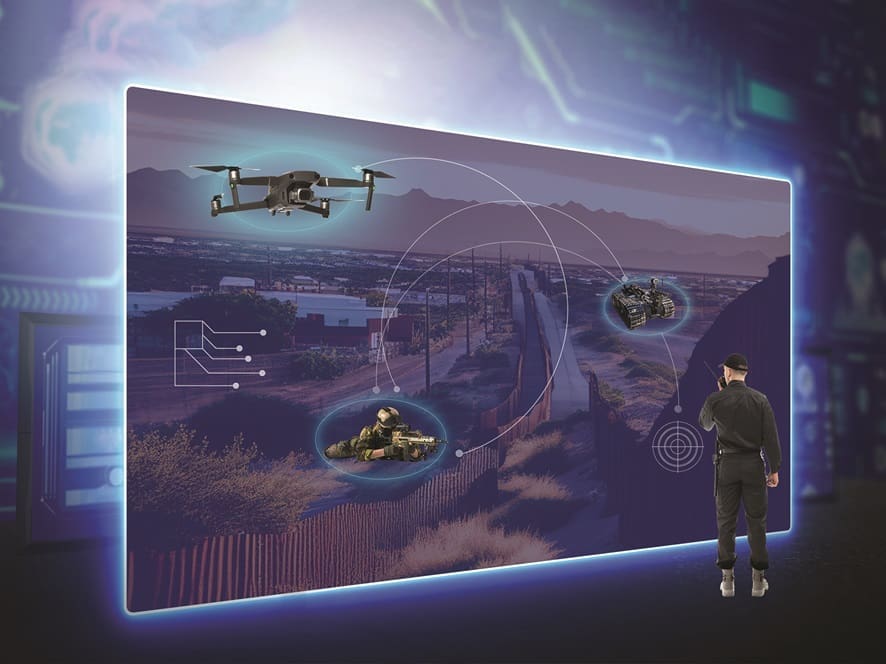In our previous exploration of drone technology, we delved into the advanced capabilities shaping the future of military and homeland security operations. Now, we turn our focus to the actual deployment of these unmanned marvels in real-world conflicts. This blog examines the critical role drones have played in modern warfare, focusing on Israel and Ukraine’s recent experiences, China’s growing drone prowess, and India’s response to these emerging threats.
The Israeli Experience with Drones
Israel’s strategic use of drones for surveillance, reconnaissance, and combat is a testament to its technological prowess and tactical innovation. Drones like the Hermes 900 have been integral in border surveillance and targeted operations, providing Israel with a significant advantage in intelligence gathering and threat mitigation. AI edge computing has played a crucial role in enhancing the capabilities of these drones, enabling faster data processing and decision-making in real-time.
Hamas has increasingly used drones, such as quadcopters, to disable Israeli surveillance and communication installations and kamikaze Al-Zawari drones. The group also possesses a long-distance drone, the Shehab. Israeli forces, in response, have employed sophisticated drones like the Heron TP and Hermes 900, which leverage AI edge computing for improved performance and data analysis.
Additionally, Israel has revealed that it also uses drones for airstrikes in its most recent conflict with Hamas. The Hermes 450 Zik, for example, can fly for 17 hours, allowing for prolonged operations without landing, unlike piloted aircraft. These drones are operated from containers equipped with screens and other necessary equipment, providing operators with battlefield details and allowing them to fly the drone in coordination with other forces.
The conflict has also seen the use of the Spike FireFly loitering munition, a drone designed for urban warfare, particularly in dense areas where situational awareness is limited. This drone, known in Hebrew as Moaz and manufactured by Rafael, is intended for use by ground forces in urban environments where enemies might be hiding behind cover. Skydio’s short-range reconnaissance drones for 3D scans of complex structures and navigating obstacles autonomously have also been deployed. The Israeli military also employed self-piloting drones from Shield AI for indoor combat and requested Switchblade 600 kamikaze drones from the U.S.. However, despite advanced technology, the Gaza conflict shows that classic military tactics and ground forces are still crucial.
Drones in the Ukraine Conflict
The ongoing conflict in Ukraine has been a stark demonstration of drones’ evolving role in warfare. Ukrainian forces have employed Turkish-made Bayraktar TB2 drones for reconnaissance, target acquisition, and damage assessment, significantly impacting the dynamics of the conflict. These drones have provided crucial intelligence and have been pivotal in several vital operations, underscoring the growing importance of UAVs in modern combat scenarios.
The Ukraine conflict has illustrated the virtues of low costs and expendability in drone warfare. Both Russia and Ukraine have used drones for missions in densely defended zones, leading to a shift towards lower-cost and more disposable platforms. Despite being sophisticated, the Bayraktar TB-2, Russian Forpost, and Orion drones have shown vulnerabilities against jamming and low-altitude air defenses. This has led both countries to increasingly turn to very low-cost or disposable drones, as the cost of shooting down these one-way attack weapons exceeds their value.
Ukraine’s innovative use of drones has not only been limited to military applications but has also included leveraging commercial drone technologies for better understanding and monitoring of the battlefield. This approach has enabled faster and more effective coordination for infantry, armored vehicles, artillery, special forces, and irregular units fighting on the ground.

China’s Advancements in Drone Technology
China has been a major player in the development and deployment of drones for military purposes. Recently, China developed a low-cost drone jet engine that could revolutionize drone warfare, offering superior performance at a fraction of the international price. The incorporation of AI edge computing in these drones allows the People’s Liberation Army (PLA) to field high-speed, long-endurance drones, significantly enhancing their military capabilities. In fact, many fear that these technological advancements could help China target American warships and military bases around Taiwan.
China’s drones are not only used domestically but have also become a major export. Countries like Saudi Arabia, Myanmar, Iraq, and Ethiopia are among those that have acquired Chinese combat drones for use on their battlefields. China has become the world’s leading exporter of weaponized drones, delivering 282 combat drones to 17 countries in the past decade. The country plans to produce 100 high-end drones each year by 2025.
Chinese President Xi Jinping has emphasized the role of drones in transforming warfare and has committed to accelerating the development of unmanned, intelligent combat capabilities. While China has not yet carried out a drone attack, it has deployed combat drones in exercises around Taiwan, indicating their strategic importance in potential confrontations.
The design and capabilities of China’s drones, such as the Caihong 4 and Wing Loong 2, are similar to US-made models but are offered at a much lower cost, making them attractive to global buyers. This affordability, combined with fewer end-user restrictions than US export controls, has contributed to China’s success in the global drone market. The use of Chinese drones in various conflict zones also provides valuable feedback for further refinement of their capabilities, suggesting that China could rapidly catch up with the US in terms of drone technology.
India’s Response to Regional Drone Threats
India is actively upgrading its drone technology to counter threats from neighboring adversaries, especially China and Pakistan. A secret document from the National Geospatial-Intelligence Agency revealed that China is making technological advances that could threaten the region, emphasizing the need for India to advance in drone technology for effective national defense.
India’s response includes developing various missions using UAVs along its border with China, such as logistical support, border surveillance, battle damage assessment, artillery spotting, and communications support. However, the harsh climate of the Himalayas and the thin air at high altitudes pose challenges to UAV performance, requiring India to adapt its drone technology accordingly.
Pakistan’s increasing use of drones along the India-Pakistan border represents another challenge. These drones are used for transporting weapons, explosives, drugs, and other supplies over the border, as well as for espionage against military installations and critical infrastructure. The increasing number of drone sightings at the border underscores the urgency for India to enhance its counter-drone capabilities.
In response to these security threats, India’s Defence Research and Development Organization (DRDO) has made significant strides. They have successfully tested the Autonomous Flying Wing Technology Demonstrator and an indigenous high-speed flying-wing Unmanned Aerial Vehicle (UAV). These developments are part of India’s broader initiative to indigenize its armed forces and reduce reliance on foreign weaponry suppliers. The DRDO’s efforts include the development of UAVs with capabilities such as autonomous landing, take-off, and satellite-based augmentation for improved navigation.
The strategic focus on advancing drone technology reflects India’s commitment to maintaining a robust defense posture against regional threats. As drone warfare becomes an integral part of modern military strategy, India’s initiatives signify its determination to stay at the forefront of this technological evolution.
The Evolving Role of Drones in Modern Warfare
The widespread use of drones in military operations around the world, as seen in the experiences of Israel, Ukraine, China, and India, underscores their growing strategic importance in modern warfare. The United States has also leveraged drone technology extensively for counterterrorism operations in various regions, demonstrating their effectiveness in targeted strikes and intelligence gathering. Similarly, Turkey has showcased the operational versatility of drones in conflicts in Syria and Libya.
As technology such as AI edge computing advances, we can expect drones to become even more sophisticated, incorporating greater levels of artificial intelligence, enhanced stealth capabilities, and extended endurance. These advancements will likely expand their role in both asymmetrical warfare and conventional conflicts, necessitating an evolution in military tactics and countermeasures.











